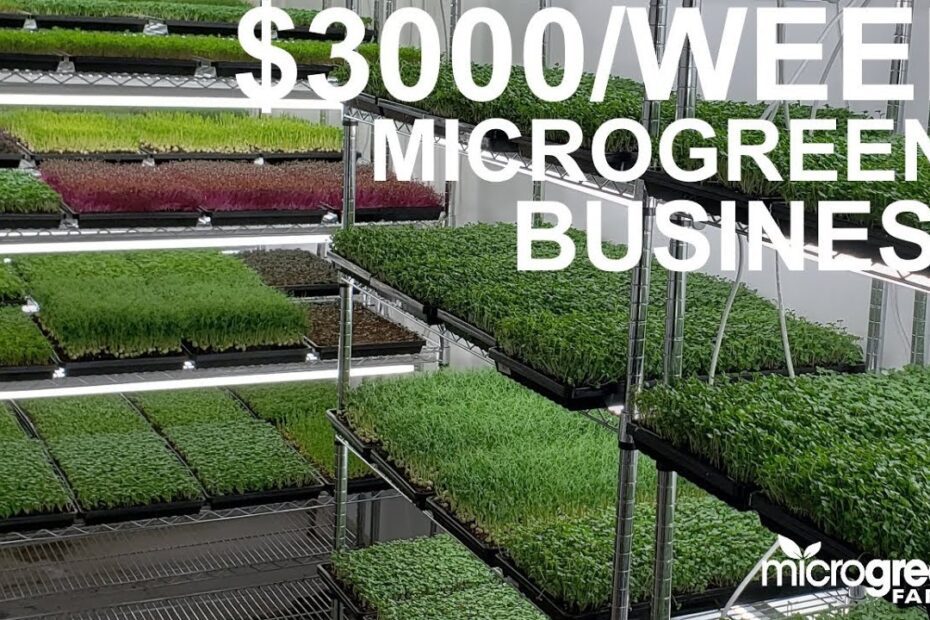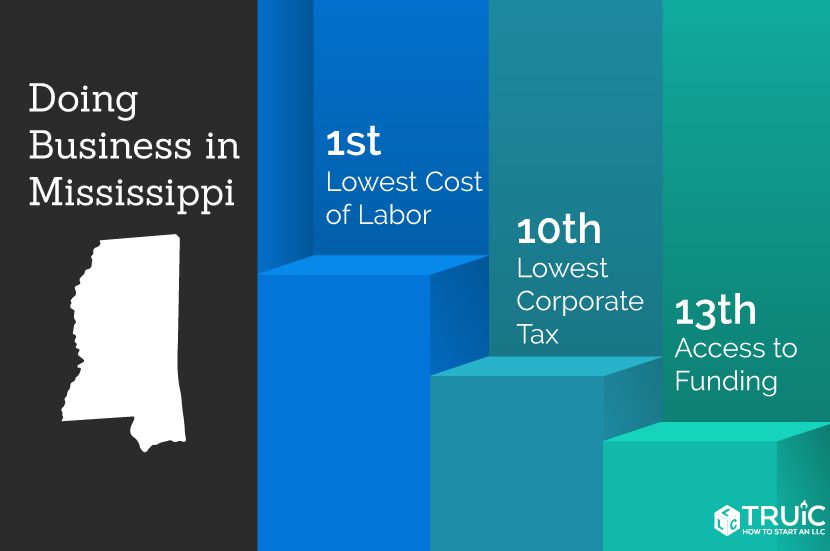To start a microgreens business, you will need to find a source of quality seeds, purchase the necessary supplies, and set up an indoor growing space. You will also need to create a marketing plan and develop a customer base. Once you have established your business, you can begin selling your microgreens at farmers markets, local restaurants, or online.
- Research the microgreen market in your area
- Find out what types of microgreens are popular and in demand, then identify potential customers including restaurants, caterers, and grocery stores
- Determine the best way to grow microgreens
- Will you use soil or hydroponics? What type of growing system will you use? 3
- Choose a suitable location for your business
- The space should have good lighting and ventilation and be large enough to accommodate your growing system(s)
- Set up your growing system(s) and begin growing microgreens
- Harvest the microgreens when they are ready and package them for sale
- Market your business to potential customers and make sales!
Microgreens Business Plan Pdf
If you’re thinking of starting a microgreens business, you’ll need a solid business plan. This blog post provides detailed information about what you should include in your microgreens business plan.
Your microgreens business plan should include an executive summary, market analysis, company overview, product/service offerings, marketing strategy, management team, and financial projections.
In your executive summary, give a brief overview of your microgreens business. Include why you’re starting the business and your long-term goals. In your market analysis section, research the current state of the microgreens industry.
Who are your potential customers? What do they want? How much are they willing to pay?
In your company overview section, describe your microgreen operation. Where will you grow your greens? What type of equipment will you need?
How will you package and ship your products? Include any other important details about how your company will operate.
In the product/service offerings section of your business plan, describe what types of microgreens you will sell and any value-added services you will offer (e.g., custom growing).
In your marketing strategy section, detail how you will reach potential customers and promote your products/services. Will you use online marketing or attend trade shows? How much does each method cost per customer acquired?
Do I Need a License to Sell Microgreens
There is a lot of confusion out there about whether or not you need a license to sell microgreens. The answer is: it depends. If you’re selling them wholesale to restaurants, grocery stores, or other businesses, then you will most likely need some type of food handler’s license.
But if you’re selling them at a farmers market or through a Community Supported Agriculture (CSA) program, then the rules are more relaxed and you probably won’t need a license.
The key thing to remember is that microgreens are considered fresh produce, and as such, they are subject to the same laws and regulations as other fresh fruits and vegetables. That means if you’re handling and selling them in a way that could potentially make someone sick (for example, if they’re not washed properly), then you could be held liable.
So it’s always best to err on the side of caution and get whatever licenses or permits required in your area.
Is Microgreens Business Profitable
If you’re considering starting a microgreens business, you may be wondering if it’s actually profitable. The short answer is yes, microgreens can be quite profitable – but it depends on a number of factors.
For starters, let’s look at the costs associated with growing microgreens.
You’ll need to invest in some basic equipment like trays, grow lights, and seeds. If you’re growing on a larger scale, you may also need a greenhouse or other type of climate-controlled space. Overall, your start-up costs will range from a few hundred dollars to several thousand, depending on the size and scope of your operation.
Once you’ve got your set-up costs covered, each tray of microgreens will cost you about $1-$2 to produce. That may not sound like much, but remember that each tray only yields a small amount of greens (usually around 1-2 ounces). So when you sell yourmicrogreens by the ounce, you can expect to make $4-$8 per ounce – which quickly adds up!
Of course, there are other factors to consider when determining whether or not starting amicrogreen business is right for you. For example, how much time are you willing to commit? Microgreens need daily attention in order to thrive – so if you’re not prepared for that level of commitment, it might not be the best business venture for you.
Overall, growing microgreens can be quite profitable – but it’s important to do your research and understand all the associated costs before getting started.
Growing Microgreens for Profit Pdf
Microgreens are one of the hottest trends in the food world right now. These miniature greens pack a big flavor punch and can be used to garnish everything from salads to cocktails. They’re also incredibly easy to grow, making them the perfect crop for small-scale farmers looking to turn a profit.
If you’re thinking about getting into the microgreen business, there are a few things you need to know. In this post, we’ll cover everything from choosing the right varieties to marketing your crop. By the end, you’ll be ready to start growing microgreens for profit!
Choosing the Right Varieties
There are dozens of different microgreen varieties on the market today. When choosing which ones to grow, it’s important to consider both flavor and appearance.
Some of the most popular varieties include arugula, radishes, and mustard greens. However, don’t be afraid to experiment with other less common types like beet greens or sunflower shoots.
The key is to choose varieties that will appeal to your target market.
If you’re selling to restaurants, for example, they may be more interested in unusual flavors that can add intrigue to their dishes. On the other hand, home cooks might prefer familiar greens that they can easily use in everyday recipes. Once you’ve decided on a few varieties, it’s time to start planning your crop!
Where to Sell Microgreens
Microgreens are a type of vegetable that is harvested when the plant is still young. They are typically grown in soil, but can also be grown in hydroponic systems. Microgreens are commonly used as a garnish or salad topping, but can also be eaten as a main course vegetable.
There are many places to sell microgreens, including farmers markets, grocery stores, and online. Farmers markets are a great place to sell microgreens because they provide an opportunity to connect with customers and build relationships. Grocery stores typically have a higher volume of customers and may be able to offer more money for your microgreens.
Online sales platforms like Etsy or Ebay provide a wide reach and allow you to set your own prices.
When selling microgreens, it is important to price them according to their weight or size. It is also important to package them in a way that will keep them fresh and easy to transport.
For farmers markets or other direct sales, plastic containers or bags with labels indicating the type of microgreen and the price per ounce or pound work well. For online sales, it is often best to package microgreens in sealed bags with air holes so that they arrive fresh and undamaged.
Microgreens Business for Sale
If you are thinking about starting a microgreens business, there are a few things you should know. First, you will need to find a location to set up your farm. This can be either indoors or outdoors, but it must have access to sunlight and water.
Next, you will need to purchase some supplies, such as pots, soil, and seeds. Once you have all of your supplies, you will need to plant your seeds and wait for them to germinate. After the seeds have germinated, you will need to water and fertilize them regularly.
Finally, when the microgreens are ready to harvest, you can sell them at farmers markets or online.
If you are interested in starting a microgreens business, there are many options available for sale. You can purchase an existing business, or start one from scratch.
There are also microgreens franchises available if you want to get involved with a larger company. Whatever option you choose, make sure that you do your research so that you understand all of the costs and responsibilities involved before making any commitments.
How to Sell Microgreens to Restaurants
Microgreens are a type of vegetable that is harvested when the plant is young. They are typically used as a garnish or to add flavor to dishes. Microgreens can be grown indoors or outdoors, and they do not require a lot of space.
If you are interested in selling microgreens to restaurants, there are a few things you need to keep in mind. First, it is important to find a restaurant that is willing to buy them. Second, you need to make sure the microgreens are fresh and of good quality.
Third, you need to price the microgreens competitively.
Here are some tips for finding restaurants that may be interested in buying microgreens:
1. Ask around!
Talk to your friends, family, and neighbors who own restaurants or work in the food industry. They may know of someone who would be interested in buying your microgreens.
2. Do some research online!
There are many online directories that list restaurants by location and type of cuisine. This can help you narrow down your search for potential buyers.
Microgreens Business near Me
Are you looking to start a microgreens business? There are many things to consider when starting a business, and location is one of the most important factors. If you’re looking for a microgreens business near you, there are a few things to keep in mind.
First, consider the climate. Microgreens thrive in warm weather, so if you’re in an area with cold winters, it may not be the best place to start a microgreens business. Second, think about your customer base.
Who will you be selling your microgreens to? Restaurants? Grocery stores?
Individuals? Knowing your target market will help you choose the right location for your business.
Third, consider the competition.
Is there another microgreens business nearby? If so, what are they doing that’s working well? How can you set yourself apart from them?
Fourth, think about logistics. What kind of space do you need for growing and storing your microgreens? Do you have easy access to water and other supplies?
These are all important factors to consider when choosing a location for your microgreens business.
If you’re thinking about starting a microgreens business, take the time to research different locations and find the one that’s right for you. With careful planning and execution, your microgreens business can be successful no matter where it’s located!

Credit: www.youtube.com
How Profitable is Microgreens Business?
Micro greens are a type of vegetable that is harvested when they are young and immature. They are usually grown in greenhouses or indoors under controlled conditions. Micro greens are becoming more popular as a source of fresh, nutritious food.
They can be used as a garnish or added to salads, sandwiches, and other dishes.
The demand for micro greens is increasing, due to the health benefits associated with them. They are rich in vitamins, minerals, and antioxidants.
Micro greens have been shown to boost the immune system and improve digestion. Additionally, they are a low-calorie food option.
Many farmers are turning to micro greens as a way to diversify their crops and increase their income.
The cost of starting a micro greens operation is relatively low, and the potential return on investment is high. The key to success is producing a high-quality product that meets customer demands.
How Much Does It Cost to Start a Microgreen Business?
It is difficult to determine the cost of starting a microgreen business as it depends on a number of factors, including the size and type of operation, the location, and the amount of start-up capital. However, there are some general estimates that can be made.
For a small microgreen operation, it is possible to get started for less than $1000.
This includes the cost of seeds, soil, trays, and other supplies. It also assumes that you already have a space to grow in and do not need to rent or build a greenhouse. If you are starting a larger operation or need to construct a greenhouse, the costs will be significantly higher.
The biggest expense in starting a microgreen business is usually labor. If you are growing microgreens commercially, you will need to hire workers to help with seedlings, planting, harvesting, and packaging. The hourly wage for agricultural workers is typically around $10 per hour[1], so your labor costs will depend on how many hours you require from your employees.
Other costs such as marketing and transportation will also need to be considered when pricing your product.
Assuming all these factors are accounted for, the average cost of starting a microgreen business is between $2000 and $5000 USD.
How Much Can You Make Selling Microgreens?
Microgreens are a type of edible plant that is harvested when they are young, typically between 1-3 inches tall. They pack a big nutritional punch and are often used as a garnish or addition to salads and other dishes.
So, how much can you make selling microgreens?
It depends on a number of factors, including the type of microgreen, the price per pound, and the quantity sold. For example, one pound of radish microgreens may sell for $8 while one pound of wheatgrass may sell for $12. If you sell 5 pounds of radish microgreens per week, you would make $40.
But if you only sell 2 pounds of wheatgrass per week, you would only make $24.
In general, most farmers market vendors charge between $5-$15 per pound of microgreens. And depending on the farmer’s market, they may sell anywhere from 1-10 pounds per week.
So if we take an average price of $10 per pound and assume that farmers market vendors sell about 5 pounds per week, that means they could potentially make up to $50 in profit each week!
Of course, this is just a rough estimate – ultimately how much money you can make selling microgreens will depend on many factors specific to your business.
Is There a Demand for Microgreens?
Yes, there is a demand for microgreens. Microgreens are nutrient-rich greens that are harvested when they are 1-3 inches tall. They have a milder flavor than mature greens and can be used as a garnish or added to salads, sandwiches, and other dishes.
Microgreens are becoming more popular as people learn about their nutritional benefits. A study published in the Journal of Agricultural and Food Chemistry found that microgreens contain higher levels of vitamins and antioxidants than mature greens. This means that they can help boost your immune system, protect against chronic diseases, and improve your overall health.
With the rising popularity of healthy eating, it’s no surprise that the demand for microgreens is on the rise. If you’re thinking about starting a microgreen business, now is the time to do it!
How To Start A Microgreens Business (In Your Spare Room)
Conclusion
If you’re thinking about starting a microgreens business, there are a few things you should know. First, you’ll need to find a niche market for your product. You can grow microgreens indoors or outdoors, and they can be sold fresh or dry.
Once you’ve decided on your market, you’ll need to get the proper equipment and supplies.
You’ll also need to create a space where you can grow your microgreens. This can be done in a greenhouse or even in your home.
Once you have everything set up, you’ll need to start growing your plants. It’s important to keep them well-watered and fertilized so they thrive.
Once your plants are ready, you can start harvesting them and selling them to customers.
You can sell them at farmers markets, online, or even door-to-door.



